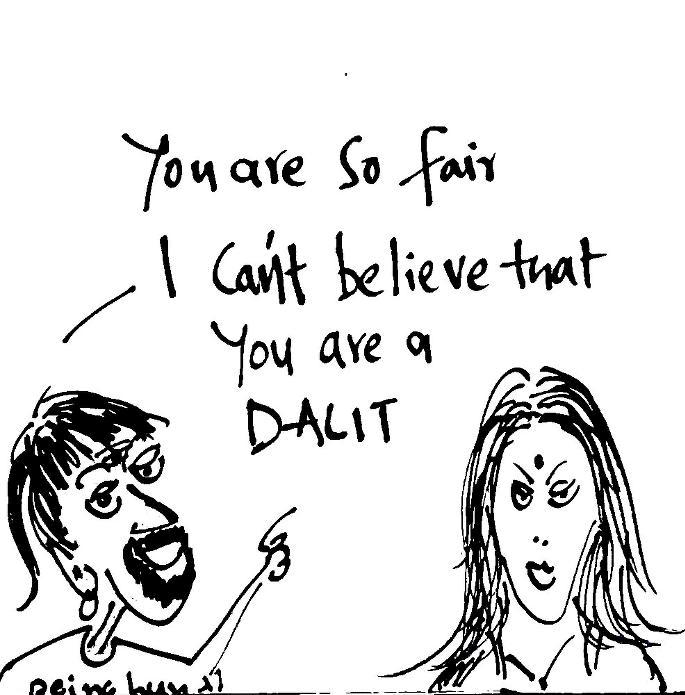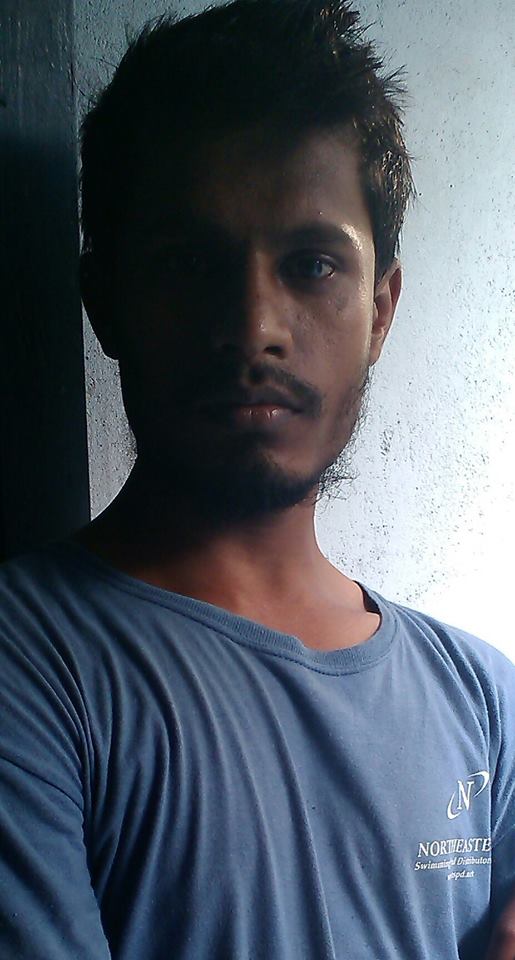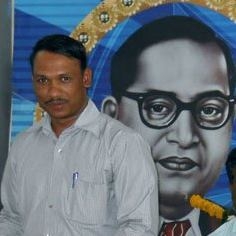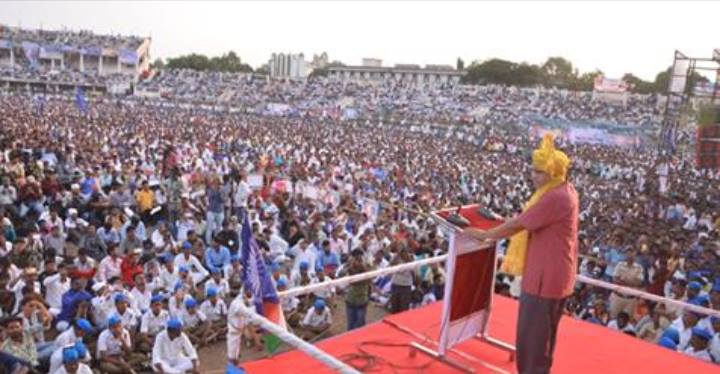Archana Bidargaddi & Prabu Venkat
Introduction
Hegemonic groups – media, artists, activists all alike – have been “using” Rohith Vemula’s institutional murder by brahminical educational establishment1, as an excuse to further their own interests in numerous ways. Kalakakshi2, an artists’ collective, called for members to come up with ideas to protest the actions of UoH that resulted in Rohith’s extreme measure. Artist PS Jaya responded to Kalakakshi’s call with her “2C Awareness” (2C for ‘Color and Caste’) performance art project3.
This article is an attempt to channelize our outrage at the project’s deeply appropriative, insensitive, and utterly deplorable nature, into a responsible critique and calling it out for what it is.
Basis for anti-caste/anti-racist feminist engagements
For any meaningful anti-caste engagement, it is crucial that the focus is placed on the root of caste oppression — brahminism. The privileges enjoyed by brahmins/savarnas over the years must be introspected on, and structural foundations of this oppressive system be challenged. Utmost care must be exercised at not perpetuating the very same oppressive violences in the name of solidarity and ‘awareness drive’ gimmicks.

On the artist’s approach, motivation and implications of the project
At the very outset, Jaya’s 2C Awareness project is neither novel, nor unique. In today’s well-connected world, one cannot be ignorant of the meaning, implications and history of ‘blackface’4. Not just in India, world over, artists from hegemonic groups have passed off “playing the oppressed” (Dalit, in this context) by “application of a coat of paint” (or the like), while in reality they have appropriated the cultures, identities and lived experiences of the oppressed, objectified the oppressed, furthered the oppressor’s gaze and have only denied the scant opportunities and space – for individuals from the oppressed communities – these projects might have actually created. A case in point is Satyajit Ray casting Simi Garewal as a Santhal tribal woman by painting her black5. This lack of originality notwithstanding, Jaya is heralded by the brahminical savarna media as being novel, brave and brilliant.
Jaya navigates those very brahminical, racist and patriarchal public spaces ‘confidently’, where Dalit women are categorically denied entry into, or experience extreme hostility, violence and dehumanization. What Jaya claims as ‘experiencing and documenting life as a Dalit woman in public spaces’ is nothing close to the hostile lived experience of Dalit women. This claim can only be seen as arrogance and blindness of her own privileged location.
Having entered public spaces with much fanfare (cameras and media following her and clicking away), Jaya emerges unscathed from them. In the event of any danger or even discomfort in these spaces, with one simple swiping-away of her mask, she can return to the safety of her original identity (and the privileges it offers) and go onto elitist lecturing about her project. Contrast this temporary and experimental “stepping into and out of a Dalit woman’s shoes” with the plight of numerous everyday violences experienced by Dalit women, across the subcontinent.
Associating caste to skin-color is lazy racism, and once again reveals her lack of awareness of the topic. It furthers the brahminical attempts to conflate the two, and reduce caste to race and genetics. This discourse has been discarded by Babasaheb in Annihilation of Caste 6.
Even though PS Jaya claims the project is intended to question/challenge the notion of caste and color amidst everyday spaces, all through her project, what can be observed is how this project is only entirely about herself, her art and promoting her art through blatant appropriation. Her 100 day performance will supposedly culminate in a book, a calendar and a bharatanatyam performance, which are problematic and have to be analyzed.
Her book shall document her 100 days’ journey as a Dalit woman and will also include the voices of few Dalit activists. Here comes another savarna experience which will define and validate what a Dalit woman’s lived experience is. While there are many books that speak ‘for’ the dalits, this book will speak ‘as’ a Dalit, thereby making it doubly problematic, arrogant, absurd and maintains the wretched casteist status quo. There are already numerous Dalit women voices speaking about their experiences, struggles and successes, whom we must listen to, and not to such opportunistic and appropriating voices of the likes of Jaya. Instead, coverage of her project so far in top media houses is a clear indicator of the space and reach the book will occupy and invite.
Her idea is also to make a calendar which will feature her blackface instead of “picturesque sceneries, photoshopped models, deities” etc. The calendar will include important milestones and dates related to Dalits, their protest movements and their festivals”3B. Even though Jaya launched her project in January, it is specifically in the 1st week of April that media houses have been covering it. In 2015 a few Dalit activists launched a radical participatory project to celebrate April as the “Dalit History Month”, as “a parallel model of scholarship to academic institutions that study Dalits without Dalits in collaborative or lead roles of research”7. While one cannot miss the irony and audacity of savarna media to cover Jaya’s project on this month of April, Newsminute takes it a step further3D and features Jaya’s ‘2C Awareness’ project under its new “Dalit History Month” section! It has to be noted that the savarna media houses which have been quick to cover Jaya’s project 3A – 3G, have completely ignored initiatives and bigger movements likes DalitWomenFight13, NCDHR’s Dalit Mahila Swabhiman Yatra14, and are totally silent on the recent rape and murder of Dalit girl Delta Meghwal16. Social media being a relatively more democratic space, it is not surprising the original Dalit History Month project thrives on Twitter8, Facebook9 and online spaces like RTI10, Savari11, Dalit Camera12, etc. That Jaya attempts to become a key proponent of Dalit history and resistance reeks of audacity and entitlement of the privileged, and it must be condemned and called out.
In pipeline is also her blackface bharatanatyam performance3F. Jaya intends to challenge the norm of putting on makeup to appear fair, that exists in practice today. What she forgets is that bharatanatyam by itself is an appropriation of Dalit art, culture and sensibilities15. Without this contextualization, Jaya’s project merely follows the elitist liberal feminist attempt at being rebellious within their own savarna silver pan.
Conclusions
Jaya’s “2C Awareness” project is a complete misreading and misunderstanding of the anti-caste struggle. There is a complete misunderstanding of what Rohith Vemula stood and fought for, and what solidarity/being allies means. Paraphrasing Rohith’s words, it could be argued that Jaya has ‘reduced Dalit women to a mere skin color’ (an immediate stereotyped identity). There is blatant appropriation, erasure of Dalit resistance, and trivializing of lived experiences.
Jaya’s utter lack of sensitivity and awareness to the everyday reality of millions of Dalit women in India, is reproachable. Her ‘2C Awareness’ project is deeply casteist. The media response and space given to her and her project follows the same pattern of further marginalizing of dalit voices to speak for themselves. We strongly condemn the project, and demand that Jaya (a) tenders an unconditional apology; (b) withdraws the entire project; and (c) cancels all future plans and events related to the project.
~
References
1. Vadiamani,H (2016) Rohith Vemula, Dalit scholar hanged himself in protest, http://www.aljazeera.com/indepth/inpictures/2016/01/rohith-vemula-dalit-scholar-hanged-protest-160131120758202.html
2. Kalakakshi, https://www.facebook.com/Kalakakshi-783319871812287/
3. Media coverage about PS Jaya’s ‘2C Awareness’ project
A. Art of Darkness, Deccan Chronicle, 07-Apr 2016
B. Why This Kochi Artist Has Been Painting Herself Black After the Rohith Vemula Suicide, The Better India, 04-Apr 2016
C. This Kochi artist has been painting her body black to fight dark skin bias, Times of India, 07-Apr 2016
D. Kerala artist makes use of her greased body to shed light on colour prejudice in India, The News Minute, 03-Apr 2016
E. Skin is no Sin, Hindustan Times, 07-Apr 2016
F. This Woman Is Painting Herself Black For 100 Days To Start Conversations About Caste Prejudice, Buzzfeed, 04-Apr 2016
G. Kerala artist covers herself in black pain everyday, Indian News, 07-Apr 2016
4. History of blackface, http://black-face.com
5. Aranyer Din Ratri, Satyajit Ray, 1970 http://www.imdb.com/title/tt0065417/
6. Annihilation of Caste, Section V, Dr. BR Ambedkar, http://www.ambedkar.org/ambcd/02.Annihilation%20of%20Caste.htm
7. Dalit History Month, http://www.tiki-toki.com/timeline/entry/423929/Dalit-History-Month/
8. @DalitHistoryNow Twitter handle
9. https://www.facebook.com/dalithistorymonth/
10. Round Yable India, http://roundtableindia.co.in
11. Savari Writers, http://www.dalitweb.org
12. Dalit Camera YouTube Channel, https://www.youtube.com/user/kadhirnilavan
13. Dalit Women Fight, https://www.facebook.com/dalitwomenfight/
14. Dalit Mahila Swabhiman Yatra, NCDHR, http://www.ncdhr.org.in/events-1/dalit-mahila-swabhiman-yatra
15. Sankritization or Appropriation: Caste and Gender in “Indian” Music and Dance, Sreebitha PV, RTI, http://roundtableindia.co.in/index.php?option=com_content&view=article&id=7344:sanskritization-or-appropriation-of-indian-music-and-dance-2&catid=119:feature&Itemid=132
16. Protests from Barmer to Bangalore #JusticeForDeltaMeghwal, http://www.indiaresists.com/pictures-protests-barmer-bangalore-justicefordeltameghwal/
~~~
Archana works as software quality professional and lives in Bergen, Norway; Prabu lives in Bergen and works as computer programmer.
Cartoon by Unnamati Syama Sundar.










